

The 4 Most Euphoric Nootropics (No Prescription Drugs) - Examined Existence. The point of nootropics is to take your brain into a spot to perform at its best. Some of them have an extra benefit of eliciting feelings of euphoria. If you are looking for euphoria that is on par with taking MDMA at a rave, then this isn’t the article for you. What this article covers is nootropics that elicit euphoria but also increase brain function. Also, you can either get them in the store or online legally. With that said, this post will talk about the science behind euphoria and also spotlight four nootropics with euphoric effects.
The Science Behind Euphoria. Hacking the nervous system. One nerve connects your vital organs, sensing and shaping your health.

If we learn to control it, the future of medicine will be electric. By Gaia Vince. When Maria Vrind, a former gymnast from Volendam in the Netherlands, found that the only way she could put her socks on in the morning was to lie on her back with her feet in the air, she had to accept that things had reached a crisis point. 10 Powerful Mudras and How to Use Them. In the practice of Yoga, you are encouraged to use your body in many ways, but ultimately with the intention of drawing yourself inward.
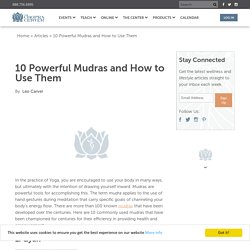
Mudras are powerful tools for accomplishing this. The term mudra applies to the use of hand gestures during meditation that carry specific goals of channeling your body’s energy flow. Study: looking at red light can improve declining eyesight. A few minutes of looking into a deep red light could have a dramatic effect on preventing eyesight decline as we age, according to a new study published this week in The Journals of Gerontology.
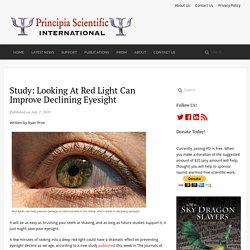
If the results are replicated in future studies, and approved by the US Food and Drug Administration, the light could augur a new era in which millions of people have access to the easy home-based therapy. It would give them a new layer of protection against the natural aging processes that steal our eyes’ sensitivity to light and ability to distinguish colors. “You don’t need to use it for very long to start getting a strong result,” said lead author Glen Jeffery, a professor of neuroscience at University College London’s Institute of Ophthalmology. The science works, Jeffery said, because the light stimulates the health of mitochondria, which are like batteries in our cells. All it takes is a few minutes The study was small, a pilot study to test the concept. Checking the pH of your soap & How to Neutralize Liquid Soap - Oh, The Things We'll Make!
Minimalist Beauty. Natural Methods To Heal Cavities and Tooth Decay. How to Reverse Cavities Naturally and Heal Tooth Decay. There is a common belief today about cavities that once you have tooth decay, that cavity can NOT be reversed.

Then the only solution to oral wellness is to have part of your tooth drilled out and filled with a synthetic material. However, it’s been proven that there are ways to reverse cavities naturally. In fact, according to a study published in the British Medical Journal, cavities and tooth decay could potentially be reversed with diet. (1) Natural Approaches to Cold & Flu Season. Signaling in Innate Immunity and Inflammation. Third-generation wearable artificial kidney will be lighter, more discrete. March 06, 2018 2 min read Source/Disclosures Source: Gura V.
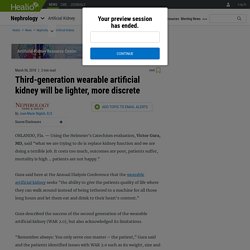
The wearable kidney: The latest developments. Disclosures: Gupa reports no relevant financial disclosures. Please provide your email address to receive an email when new articles are posted on . What Does Patient-Centricity Really Mean … And Why Do We Need It. A Beginner's Guide to Understanding Curative Therapies. Headlines from late-breaking sessions at scientific conferences herald exciting advances in medicine.
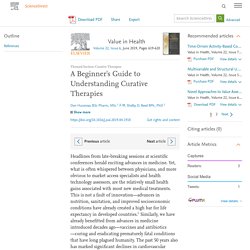
Yet, what is often whispered between physicians, and more obvious to market access specialists and health technology assessors, are the relatively small health gains associated with most new medical treatments. This is not a fault of innovation—advances in nutrition, sanitation, and improved socioeconomic conditions have already created a high bar for life expectancy in developed countries.1 Similarly, we have already benefitted from advances in medicine introduced decades ago—vaccines and antibiotics—curing and eradicating prematurely fatal conditions that have long plagued humanity. The past 50 years also has marked significant declines in cardiovascular mortality and improvements in cancer outcomes. Not surprisingly then, scientific discovery has shifted its attention toward the outliers—rare occurrences of disease that lead to significant early loss of life or prolonged suffering.
Planning for the healthcare workforce of the future. Life-long training aligned to need The effective use of new technology will be crucial to ensure optimal and efficient delivery of services and will require the health workforce to continuously learn, update and adapt skills to new operating environments.
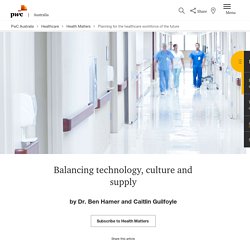
Planning for the requisite health workforce skill set should be done with an awareness of the talent pipeline and the skills taught at schools and universities, and an eye to the future requirements posed by technological innovations. Programming, data analytics and human behaviour may need to be integrated into medical curriculums alongside anatomy and neurology. The anticipated changes to workforce roles present an opportunity to redeploy, upskill or reskill employees. Peterson-Kaiser Health System Tracker.
Edibility. *joi de vivre. Physicality. Substantia. Vitality. Robust. Self-help. Patient-centred care.